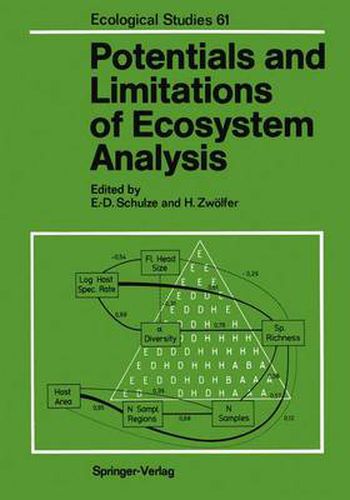Readings Newsletter
Become a Readings Member to make your shopping experience even easier.
Sign in or sign up for free!
You’re not far away from qualifying for FREE standard shipping within Australia
You’ve qualified for FREE standard shipping within Australia
The cart is loading…






This title is printed to order. This book may have been self-published. If so, we cannot guarantee the quality of the content. In the main most books will have gone through the editing process however some may not. We therefore suggest that you be aware of this before ordering this book. If in doubt check either the author or publisher’s details as we are unable to accept any returns unless they are faulty. Please contact us if you have any questions.
The identification of inputs and outputs is the first and probably most important step in testing and analyzing complex systems. Following accepted natural laws such as the conservation of mass and the principle of electroneutrality, the input/output analysis of the system, be it steady or in connection with perturbations will reveal the status dynamic, will identify whether changes are reversible or irreversible and whether changing the input will cause a hysteresis response. Moreover, measurements ofinput and output fluxes can indicate the storage capacity ofa system, its resilience to buffer or amplify variations of the external input, and it can identify structural changes. Therefore, to a certain extent, the input/output analysis can facilitate predictions about the ecosystem stability. The measurement of fluxes and the determination of inputs and outputs of eco systems are, in many aspects, analogous to measurements done by engineers when testing an electronic apparatus. The first step is the measurement ofthe input/output properties of the instrument as a whole, or ofvarious circuit boards, and the compari* son ofthese with the expected variations of the original design. Varying input and out* put can give valuable information about the stability and the regulatory properties of the device. Nevertheless, only the circuit as an entity has specific properties which cannot be anticipated if the individual components are investigated regardless oftheir position. Also, the instrument as a whole will have different input/output properties than its subcircuits.
$9.00 standard shipping within Australia
FREE standard shipping within Australia for orders over $100.00
Express & International shipping calculated at checkout
This title is printed to order. This book may have been self-published. If so, we cannot guarantee the quality of the content. In the main most books will have gone through the editing process however some may not. We therefore suggest that you be aware of this before ordering this book. If in doubt check either the author or publisher’s details as we are unable to accept any returns unless they are faulty. Please contact us if you have any questions.
The identification of inputs and outputs is the first and probably most important step in testing and analyzing complex systems. Following accepted natural laws such as the conservation of mass and the principle of electroneutrality, the input/output analysis of the system, be it steady or in connection with perturbations will reveal the status dynamic, will identify whether changes are reversible or irreversible and whether changing the input will cause a hysteresis response. Moreover, measurements ofinput and output fluxes can indicate the storage capacity ofa system, its resilience to buffer or amplify variations of the external input, and it can identify structural changes. Therefore, to a certain extent, the input/output analysis can facilitate predictions about the ecosystem stability. The measurement of fluxes and the determination of inputs and outputs of eco systems are, in many aspects, analogous to measurements done by engineers when testing an electronic apparatus. The first step is the measurement ofthe input/output properties of the instrument as a whole, or ofvarious circuit boards, and the compari* son ofthese with the expected variations of the original design. Varying input and out* put can give valuable information about the stability and the regulatory properties of the device. Nevertheless, only the circuit as an entity has specific properties which cannot be anticipated if the individual components are investigated regardless oftheir position. Also, the instrument as a whole will have different input/output properties than its subcircuits.